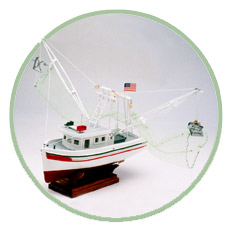
Folk Toys
Folk Toys, like other folk crafts, are produced in households where
people make the things they need for work and play. Many folk
toys actually train children for work. Clearly, the ox-and-wagon
model and toy pirogues suggest that many children once grew up
to use the real thing, just as children play with everything
from toy bulldozers to computers.
Other traditional toys such
as tops, balancing devices, and weight/string machines teach
basic physics while puzzles encourage development of perception
and problem-solving abilities. Of course, much traditional play,
such as ring-clap games, tag, or riddle and joke telling sessions,
takes place without toys. Ultimately, play is its own reward,
whether a game with special roles, a toy that imitates work,
or the contemplative spin of a top. Folk toys range from children's
playthings to adult collectibles. As with other types of folk
artifacts, the viewer must know the maker's intent to be able
to know the object functions in the culture.
For example, some dolls such
as Barbara Trevigne's baby doll or Marie Verret's moss doll are
children's toys. But Barbara's large doll serves an educational
function to teach people about African Americans in New Orleans
during the eighteenth century by accurately representing the
dress and headdress of that group. Most people would not give
this doll to a child.
View or Search Folk Toy Artifacts of the Creole State Exhibit



